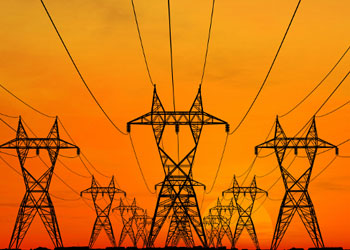 Telegraph & electrical lines
Telephone and electric wires are fixed between two poles in such a way as to allow for contraction in winter and expansion in summer. Buckled rail Gasoline drips from a freshly filled tank on a hot day because both gasoline and the steel tank expand in summer, but gasoline expands much more than steel, and so it may overflow. The amount of gasoline left in the tank when the gauge hits "empty" is less in the summer than in the winter.
Telegraph & electrical lines
Telephone and electric wires are fixed between two poles in such a way as to allow for contraction in winter and expansion in summer. Buckled rail Gasoline drips from a freshly filled tank on a hot day because both gasoline and the steel tank expand in summer, but gasoline expands much more than steel, and so it may overflow. The amount of gasoline left in the tank when the gauge hits "empty" is less in the summer than in the winter.
Thermal expansion means "increase in size on heating". Various substances expand (increase in size) when their temperature is raised and contract (decrease in size) when their temperature is lowered. In general, thermal expansion is increase in the volume of a material as its temperature is increased. It is usually expressed as a fractional change in length or area or volume per unit temperature change.
For example, when a metal block is heated, it generally expands in length, breadth and height. This indicates that the metal block expands in volume and is called as volume expansion or cubical expansion. However, if we heat a solid, which is in the form of a sheet (its thickness can be neglected as compared to its surface area), then the increase in area is called superficial expansion. Similarly, if we heat a solid, which is in form of a wire (its cross–section area is too small compared to its length and hence can be neglected), then the increase in length is called linear expansion.
A linear expansion coefficient is usually employed in describing the expansion of a solid, while a volume expansion coefficient is more useful for a liquid or a gas. If a crystalline solid is isometric (has the same structural configuration throughout), the expansion will be uniform in all dimensions of the crystal. If it is not isometric, there may be different expansion coefficients for different crystallographic directions.
In a solid or liquid, there is a dynamic balance between the cohesive forces holding the atoms or molecules together and the conditions created by temperature; higher temperatures imply greater distance between atoms. Different materials have different bonding forces and therefore different expansion coefficients.
Materials generally change their size when subjected to a temperature change while the pressure is held constant. In the special case of solid materials, the pressure does not appreciably affect the size of an object, and so, for solids, it's usually not necessary to specify that the pressure be held constant.